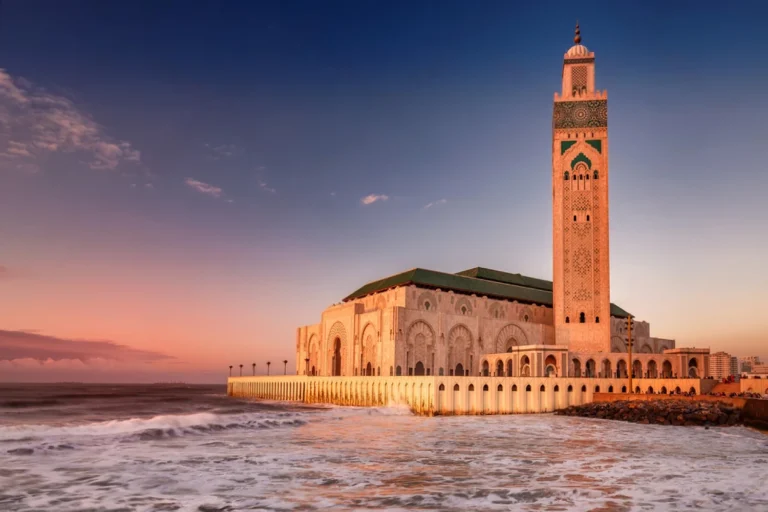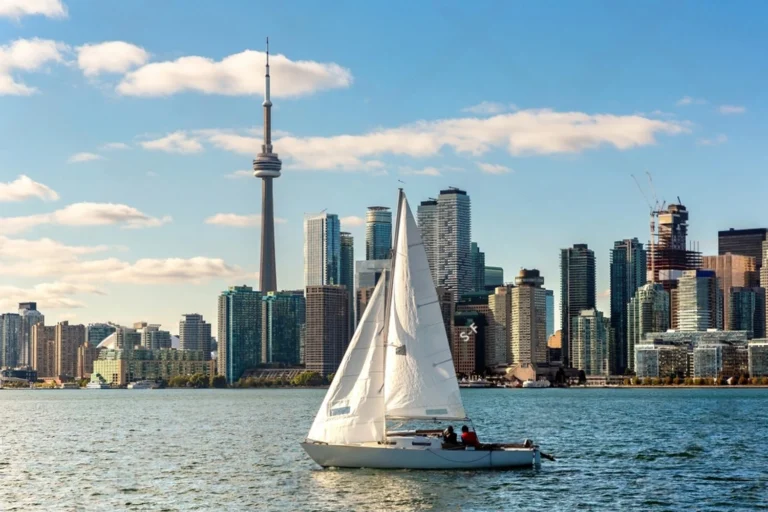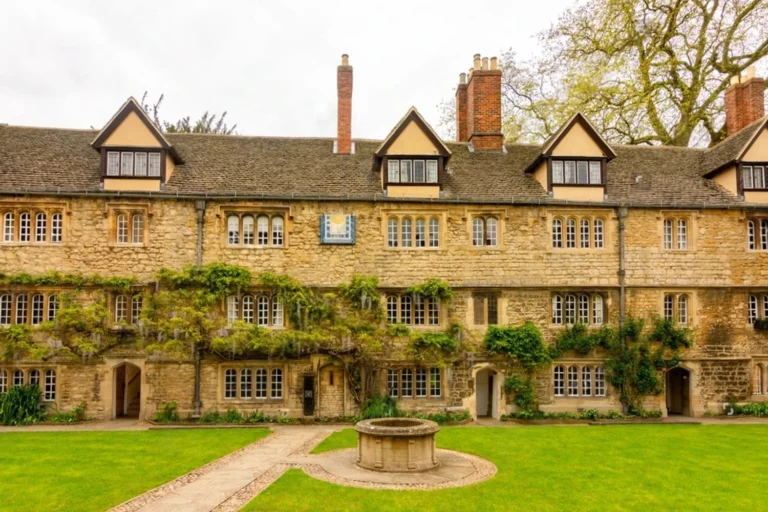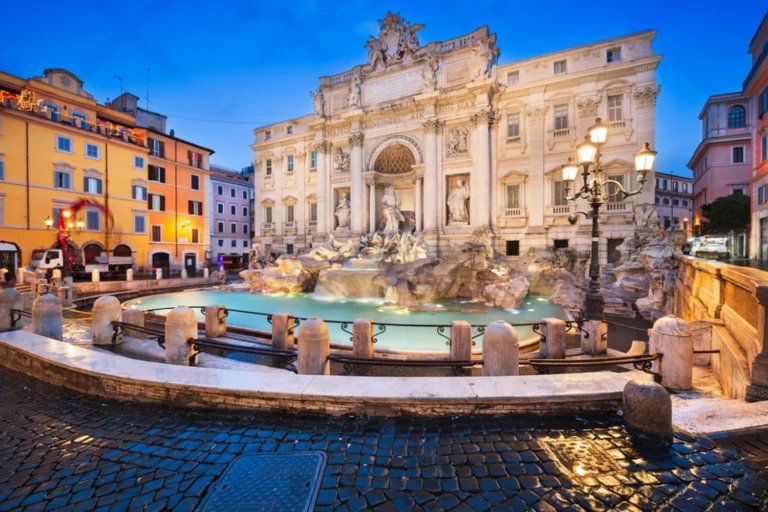California: 30 Weird and Wonderful Facts Under the Sun
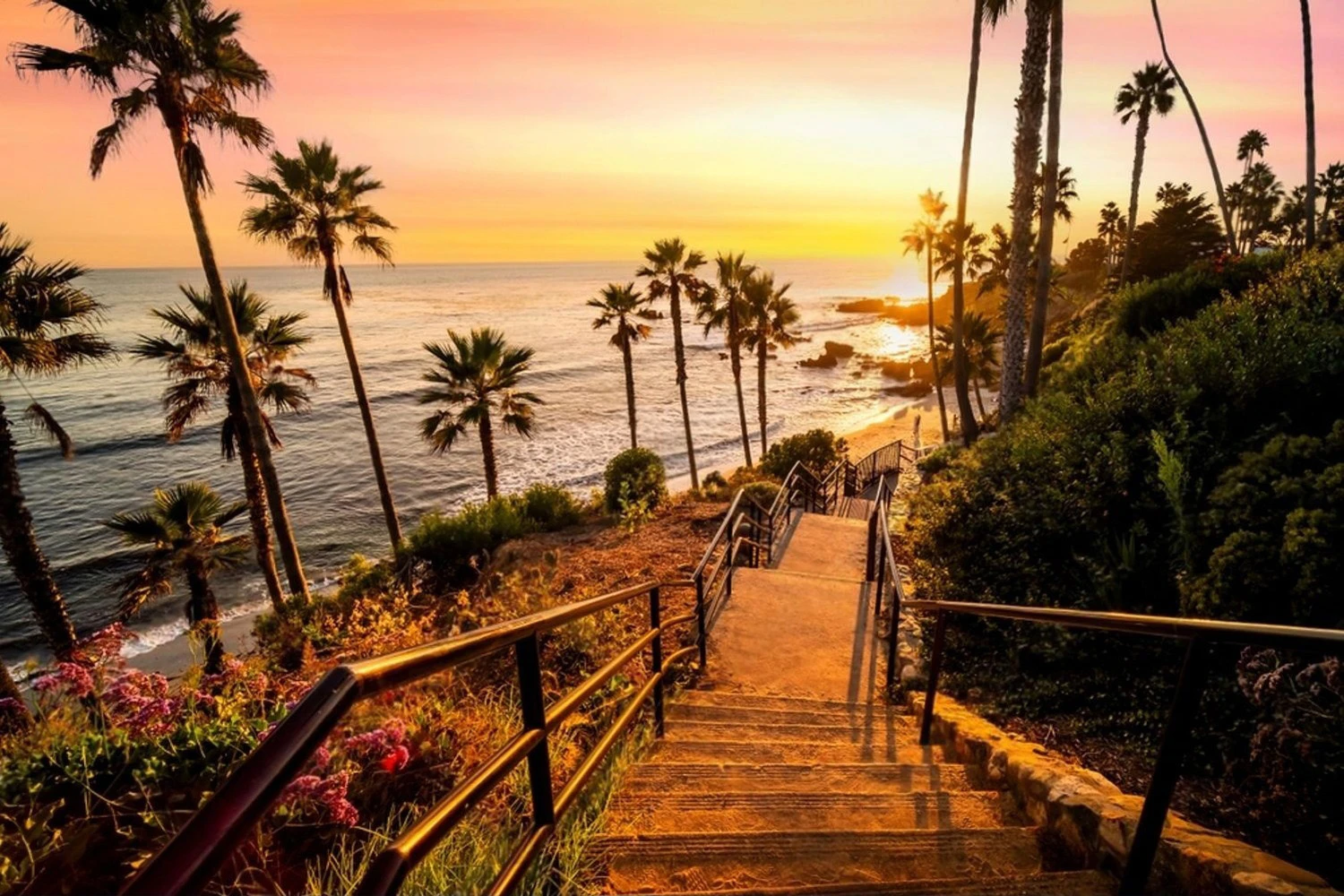
In California, when I slow down and step off the main path, I start noticing the quiet layers the hush of morning fog, citrus on the breeze, the grain of a weathered railing warm under my hand. It’s like lifting the corner of a quilt to find colors you hadn’t seen before. Small exchanges a nod at a doorway, a laugh drifting from a back patio start to matter in a quiet way. Walk with me past the obvious, and we’ll read the overlooked details that hint at a deeper spirit than any postcard can hold.
The lake that drains itself like a magic trick
I still get goosebumps thinking about the moment the water began to slip, clean and steady, into that perfect round opening. The hillside was quiet enough to hear the faint roar underneath the breeze, and the light skittered across the surface like scattered coins before the spiral took them. It’s hypnotic in the gentlest way – not violent, just a calm decision the lake makes to disappear, as if overflow could be handled with grace.
They say it funnels 48,000 cubic feet each second, which is a number too big to hold in your head, but you feel it in your ribs. Locals call it nature’s bathtub drain, and I kind of love the humility in that – power dressed up as practicality. Watching the spillway at Lake Berryessa, I remember thinking how some places teach you about surrender without fanfare: when there’s too much, you let some of it go, and the world keeps its quiet balance.

More than 300 ghost towns endure in California.
It still surprises me that a place built on reinvention hides more than 300 ghost towns. Whole communities paused when the mines went quiet, leaving porches that sigh in the wind and windows filmed with flour fine dust. The light turns thin and honest, settling over clapboard and iron. It doesn’t feel spooky so much as tender, a quiet reminder of how quickly a busy life can go silent.
In Bodie, everything feels paused: school maps still rolled above chalky boards, a poker table waiting on its last bad hand, bottles the pale green of old sea glass on shelves. They call it “arrested decay,” and that’s exactly how it lands time holding its breath. I remember standing by a doorway and feeling something like gratitude, as if a stage were waiting for someone to finish a line, but the silence had already said enough.
Fortune cookies began in California’s Japanese tea gardens
I remember cracking one open after dinner and thinking how funny it is that this little shell of sweetness gets credited to China. The truth is softer and stranger: they were born in the quiet of Japanese tea gardens, where bakers tucked tiny messages into warm, vanilla scented crescents long before they found their way to Chinese restaurants. That twist always makes me smile – a whisper folded in sugar, somehow misunderstood but still loved.
Once, wandering a Japanese tea garden in San Francisco, I could smell toasted flour and see steam rising from cups of green tea, the kind of scene that makes time slow down. It felt easy to imagine immigrant hands shaping batter, sliding notes inside like kindnesses for strangers, then following the hum of the city to wherever people gathered to eat and hope. The cookie traveled, adapted, and was renamed, the way stories often are when they cross a table.
Maybe that’s why each bite tastes a little like more than dessert to me – a passport tucked inside a pastry. There’s sweetness, yes, but also the gentle irony of a tradition that isn’t what people think and is somehow even better for it. It’s a small reminder that places grow by borrowing and blending, and that a good surprise can belong to everyone who’s hungry for a little luck.
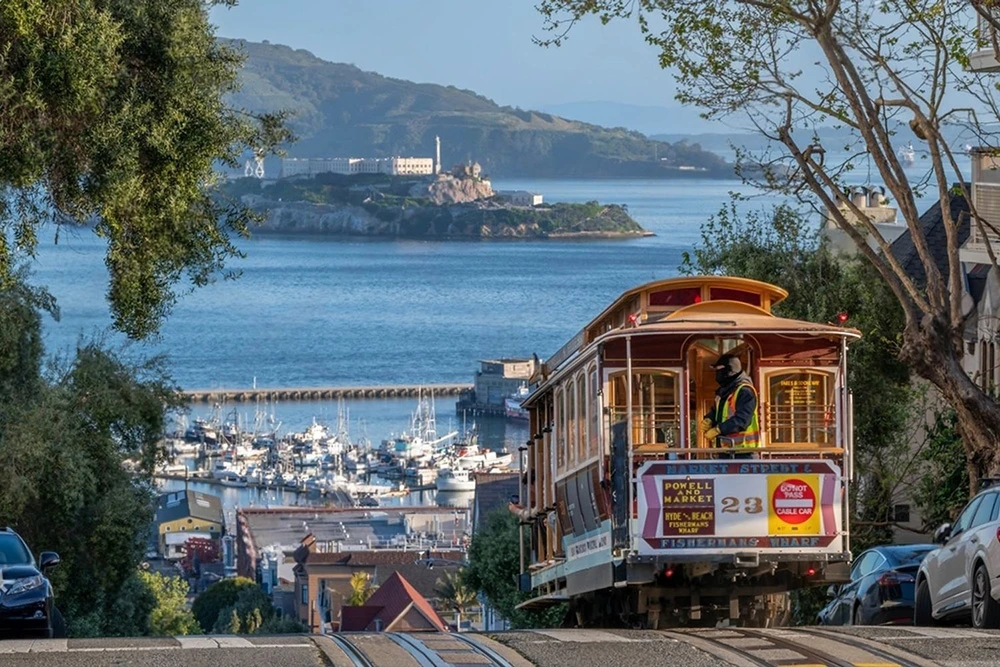
A city born with a sky long name
I still smile at how it began a tiny Spanish settlement with a name that feels like a whole prayer: El Pueblo de Nuestra Señora Reina de los Ángeles sobre el Río Porciúncula, which translates, more or less, to “The Town of Our Lady the Queen of the Angels of the Porciúncula River.” Say it out loud and you can almost hear mission bells in the heat and the hush of water slipping over stones.
What gets me is how that generous name still fits the mood on certain afternoons: sun warmed stucco, jacaranda confetti underfoot, the air sweet and a little dusty. It’s a ribbon of syllables for a place that never fit into a small box, a reminder that cities, like people, arrive in the world with hopes bigger than their size.
Locals, being practical, tucked it into a pocket and just called it L.A., and I love that too a nickname you can toss across a crowded room. Behind the shorthand lives that long breathed blessing, and maybe that’s why the city can hold so many stories at once; it was named to hold angels and a river, and it still makes room.
The largest life you can stand beneath is a tree
First came the hush, the kind that makes you breathe slower. Then this trunk rose in front of me ribboned bark, cinnamon colored, smelling faintly of resin and dust after sun. Someone once told me the largest living being you can stand beneath is a single tree, and here it was: the General Sherman, older than the Roman Empire and 275 feet of calm.
I remember tilting my head until the crown blurred and the world felt small and fleeting. The air had that cool, shaded stillness of a cathedral without walls. In Sequoia National Park, time simply slows; even worries go quiet. I half expected the giant to clear its throat and offer a lesson on patience a clock that refuses to tick.
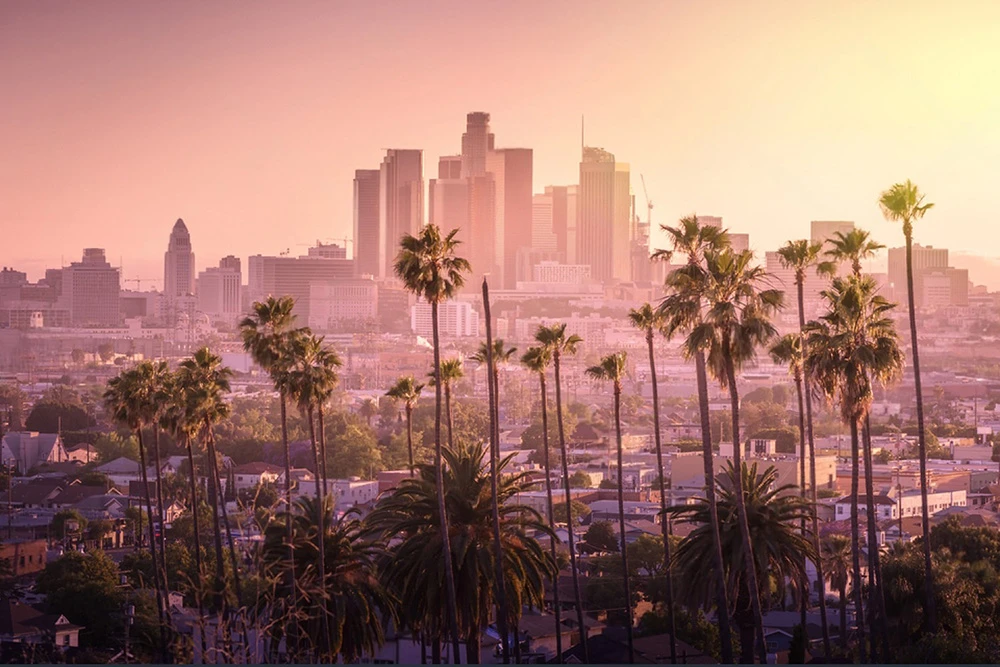
From furrows to film: a dream factory took root
I love imagining the smell of hay where red carpets are now. Before marquees, there were rows of beans and the low hum of bees in the heat; the air would have tasted dusty and a little sweet, the kind that clings to your tongue and lingers.
Then, in 1911, a small outfit called Nestor Studios set up on a modest lot, and Hollywood began to lean toward make believe – like a seed that found the perfect patch of light. Two decades later, fields had become backlots, painted skies leaned on timber frames, and the town was selling equal parts sunshine and scandal with a straight face.
I think that blend is why it still feels tender and brazen at once: the same sun that ripened crops now overexposes lives. Remembering it all started with dirt and nerve makes the glitter feel human; the make believe has a past you can almost smell, and somehow that makes me trust its stories a little more.
Goat hills that turned into moving national landmarks
I love that these steep hills were once meant for goats. I picture shaggy grazers nibbling wild grass, and then one day the clang of a bell cutting through the fog, a new rhythm for the slopes. The city decided people should climb instead of graze, and the cable cars showed up wood and iron, grip and grit; decades later, in 1964, they were named the world’s first moving National Historic Landmark. The bell still rings like a brass heartbeat, steady and a little proud.
What gets me is how ordinary their magic feels: still the only cable cars operating in the United States, still rattling along as if time forgot to cancel them. On a cool afternoon in San Francisco, the air tastes a bit like salt and cedar, and the rails gleam, two silver seams threading neighborhoods together. Every climb says the same gentle thing this place was never easy, but it’s always found a way.

Downtown towers rest on forgotten Gold Rush ships
Some mornings the sidewalks feel a little hollow, as if they still remember water moving underneath. A friend once told me that during the Gold Rush of 1849, crews jumped ship and ran for fortune, leaving their vessels to sleep in the bay. Instead of hauling them away, the city buried the hulls and built right over them; now sleek offices quietly perch on sea dark timbers and a few playful pirate ghosts, the past creaking softly beneath lobby marble here in San Francisco.
I love how fitting that is for this place a city shaped by risk, built on whatever came to shore. It changes the way I stand in an elevator, imagining meetings held above old decks and a faint saltiness threading the air. It’s a quiet, surprising comfort that even amid downtown’s pinstripes, we’re standing on wooden ribs that once crossed waves.
California’s mountains blush with watermelon snow in summer
The first time I saw the snow turn softly pink, I had to laugh like winter had borrowed a slice of sunset. The air was sharp and clean, and somehow it smelled faintly of fresh watermelon, that cool, sweet scent you only notice when you’re paying attention. Reddish freckles dusted the drifts, tender and strange, and the whole slope felt like a secret someone had whispered to the wind.
They call it watermelon snow, a bloom of tiny alpine algae that tints the white world rosy, and it fits the Sierra Nevada’s mischievous spirit perfectly. I love that here, the mountains bend the rules: summer flavor in winter’s skin, a postcard accidentally mailed from July. It reminded me that nature doesn’t choose one season at a time she stacks them, lets joy leak through the cracks, and asks us to keep our minds open to whatever color wonder decides to be.
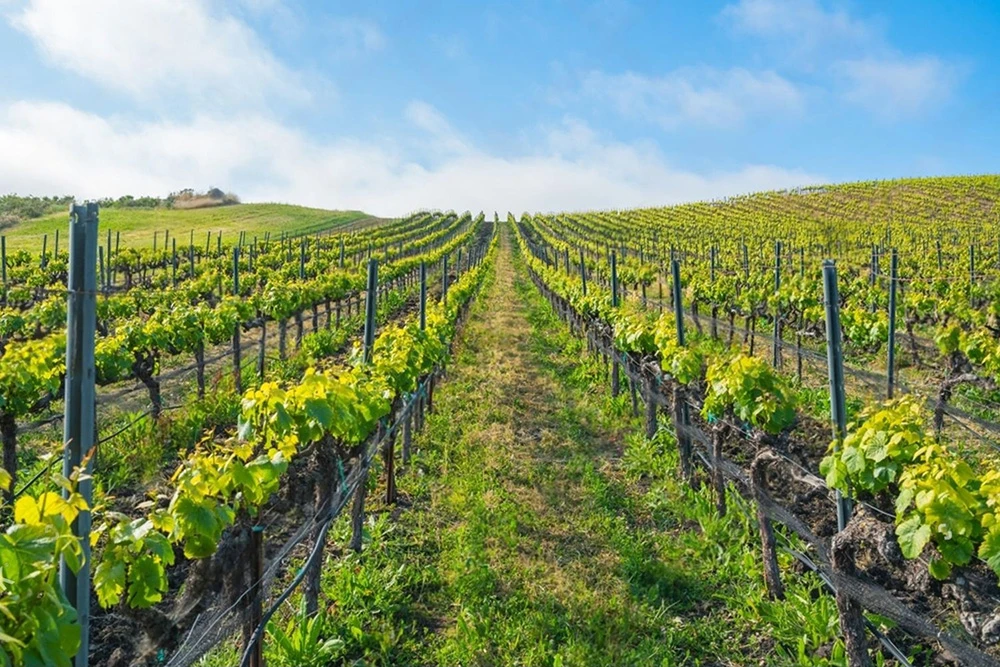
Where avocados wear crowns and joy turns green
The first thing that hits you is the smell lime, cilantro, and the warm hush of tortillas, like the air itself is ready to be dipped. In Fallbrook, California, they call it the Avocado Capital of the World, and you can feel why: the streets hum, cheeks are smeared with guac, and strangers grin like old friends. It isn’t fancy, just generous farmers nodding with the quiet pride of people who grow something everyone loves.
There’s guacamole eating bravado and avocado ice cream softening under the sun, sweet and grassy at once, while beauty queens balance fruit tiaras with a wink. I remember tasting a scoop and thinking it was sunlight mashed into velvet, then laughing as a kid next to me declared it tasted like summer. The whole place runs on green gold, and for a day you see how a single fruit can gather a town into one big heartbeat playful, nourishing, and so deeply local it lingers with you long after the last seed is tossed.

A humble start to Napa’s wine legend
It still surprises me how big stories can begin as a whisper in a cellar. I remember the cool, oak scented hush and that slow, steady promise in the air, as if the room itself was breathing. In moments like that, you feel how pride settles in long before the world catches on.
Back in 1861, a German immigrant named Charles Krug put his name on a modest winery and probably never imagined it would become part of the region’s identity. That simple choice opened a door that’s still swinging, each glass holding a little of the sun and patience that define Napa Valley.
Here’s the twist I love: while we toast the icon, nearly 75 percent of California’s wine actually flows from the Central Valley. It reminds me that fame and substance often travel different roads Napa is the headline, but the Central Valley is the chorus that gives the song its strength. Maybe that’s the beauty of it: the glamour and the hard work, sharing the same bottle, teaching you to taste both.

A vanished grizzly still guards the flag.
Every time I catch that square of cloth twitching over a schoolyard, I feel a small ache. The bear looks mid stride, jaw parted, a paper roar that rides the afternoon wind. In California, the bear is everywhere and nowhere at once – stitched on caps, painted on murals, waving from flagpoles – and yet the real paws stopped tracing these valleys a century ago. I remember learning that in fourth grade and going quiet for the rest of the day.
What gets me is the irony people carry with a wry smile: we chose the bear as a sign of strength, then set about conquering it. Ranches, bounties, spectacle; admiration met fear until the last tracks faded in the 1920s. Now the flag keeps a kind of quiet vigil, like a ghost pacing a doorway, reminding us how easily pride can override care. It makes me hope our symbols aren’t just for show, but reminders to protect what’s still alive.
A wooden plank that became America’s largest amphitheater
Funny how some giants begin as whispers. At the Hollywood Bowl, now the largest outdoor amphitheater in the United States, I think about how it started in 1922 as a wooden plank beneath a canvas tent humble, temporary, almost shy. One of the first pieces to thunder across that early stage was Wagner’s Ride of the Valkyries, and even now I can feel the horns in my ribs, that wild, charging music, like a rocket on the launchpad. It’s such a perfect first breath for a place that would grow into a cultural force.
I remember a dusk there when the air smelled faintly of pine and popcorn, and the crowd hummed like a single, contented note. You can sit on a blanket and still feel part of the same orchestra of strangers, the night breathing with you. Knowing it all began with a plank and a tent makes the grandeur feel more human like all this sound and light are proof that big dreams don’t need big starts, just a fearless opening chord.

The internet began with a shy little “LO”
I love that the first thing the internet ever said was just “LO” half a hello, half a hiccup. Picture 1969: a late night lab humming with fans, the green glow of a terminal, air that smelled faintly of dust and coffee. In a UCLA computer room, they meant to type LOGIN, and the system gave up after those two letters, a tiny door cracking open and then sticking. It somehow fits the spirit of that place curious, scrappy, more interested in trying than in posing.
That stumble feels right to me. So much of what matters starts this way unfinished, awkward, but brave. The first online fail is also the first online tenderness, a reminder that the web’s vast roar began as a small, earnest sound. Whenever my own messages falter or arrive imperfect, I think of that “LO” and smile; even the world’s grandest conversation began by clearing its throat.
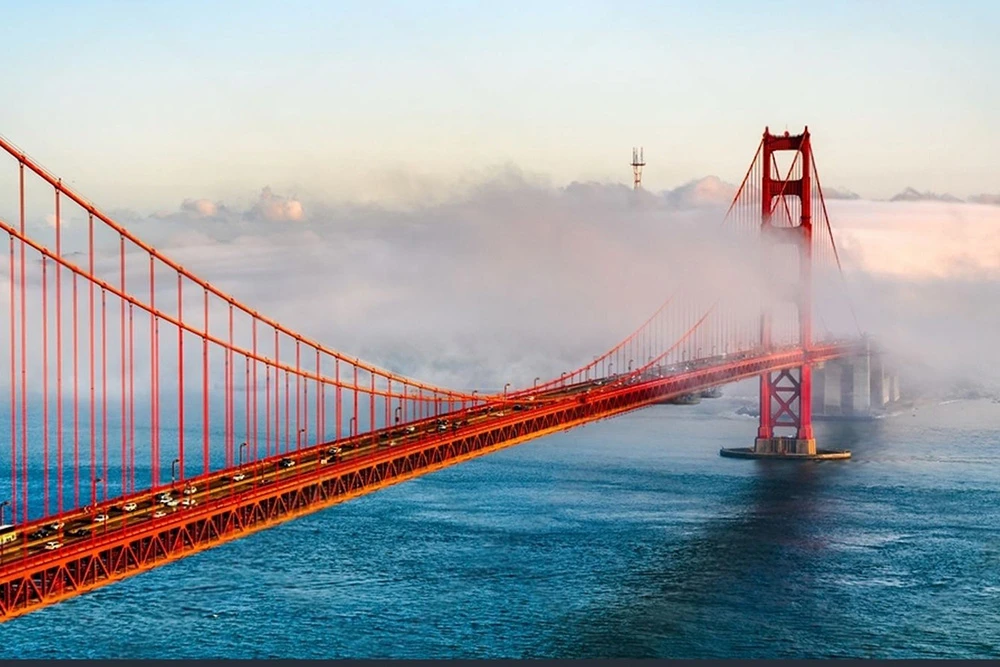
The hottest, driest, lowest place still remembers to bloom
I keep thinking about a place where the air presses on your skin and salt glints so bright it makes you squint. It holds three U.S. records at once hottest, driest, lowest national park and somehow that list of extremes only makes its silence feel deeper; this is Death Valley.
In spring, the heat eases just enough, and color shows up like a small rebellion patches of gold, purple, and white trembling on delicate stems. I remember feeling an odd tenderness in all that severity, the kind that makes you breathe slower. In a place defined by extremes, those flowers reminded me that resilience doesn’t have to be loud to be real.
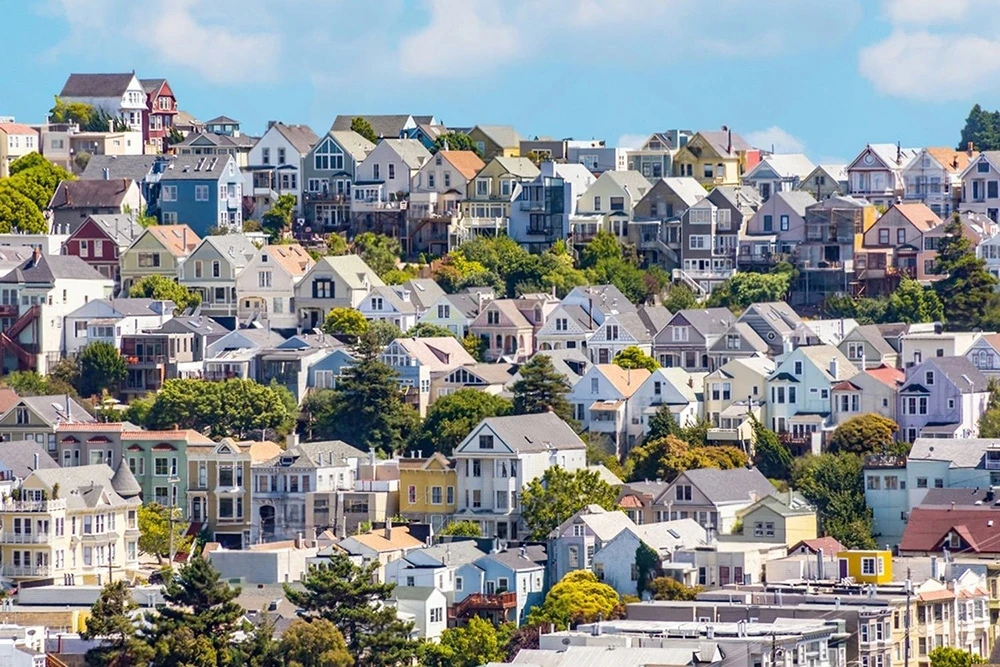
A post apocalyptic Riviera with stubborn beauty and hope
I didn’t expect color here the air smells of brine and dust, and ghost white crust pricks the shoreline. And yet the water shivers and suddenly there are flamingos, a soft flare of pink drifting past broken piers. They still call it the Salton Sea, and in that name you can almost hear the glamour that once hummed here.
Mid century resorts slump in the heat, their neon gone, their pools sugared over with salt; the old hotels sit like the bones of a party that danced itself out. What surprised me is how the emptiness has been adopted ambitious artists paint the silence, stitch sculptures from scraps, and lean color against the wind. It turns the eeriness tender, as if the place is being listened to at last, and I remember feeling oddly hopeful: decay doesn’t cancel joy; it just changes the key.
https://en.wikipedia.org/wiki/California
When beauty was policed, briefly and cruelly
I remember learning about it over a morning coffee and feeling the taste go a little bitter. In the 19th century, San Francisco actually passed an “ugly law,” pretending to protect sensibilities while really protecting vanity. Imagine deciding which faces were fit for daylight. The whole thing feels like a cracked mirror the boomtown once held to its own face sharp, insecure, and desperate to look perfect.
It was repealed decades later, with the kind of shame that arrives late but still matters. I think about that whenever fog softens the edges of the streets and gulls heckle the waterfront: how a place grows up when it stops mistaking polish for goodness. The wind off the bay smells of salt and change, and all kinds of faces move through it now tender proof that a city’s beauty isn’t in a fixed surface, but in the courage to make room for everyone.
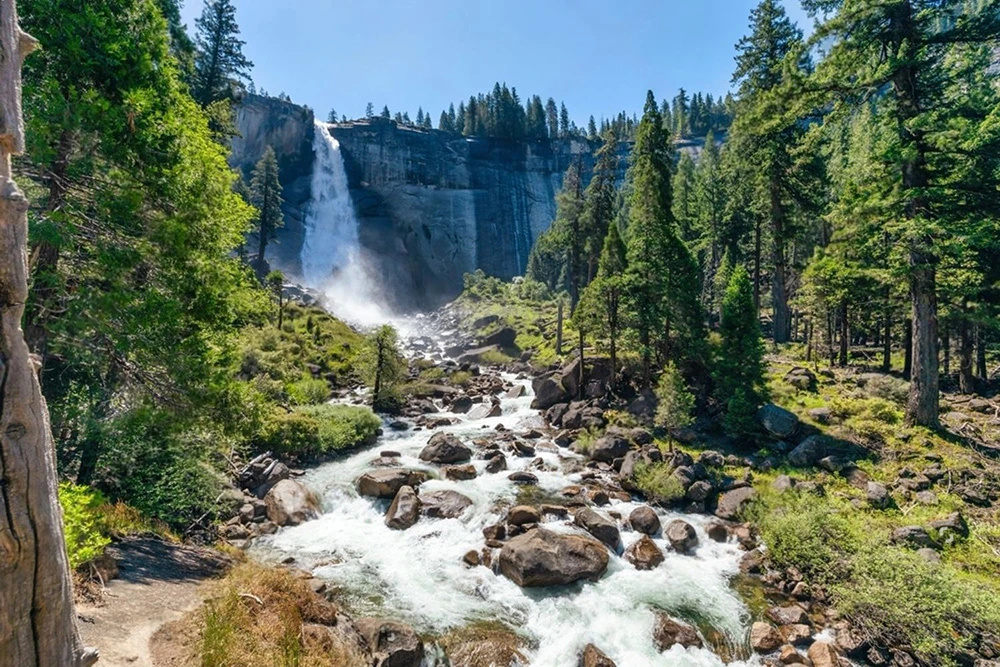
Where Barbie’s dream began: Los Angeles, 1959
Funny how a whole world can start with paper. Ruth Handler watched her daughter shuffle those flat dresses and cutout smiles, and somewhere in that quiet click of imagination, Barbie arrived born in Los Angeles in 1959, all sunlit hair and bubblegum gloss. I can still smell the toy aisle of my childhood, that plasticky sweetness, shelves glowing, rows of pink and promise.
What gets me is the intent: she wasn’t selling a doll so much as a doorway. Handler wanted kids to try on futures, to stand a little taller and say, someday. A billion pink shoes later, California still shapes what that dream looks like bright, big windowed, edged with ocean light. And every time I see that splash of pink, I remember how easy it felt to believe that adulthood could be chosen, one possibility at a time.
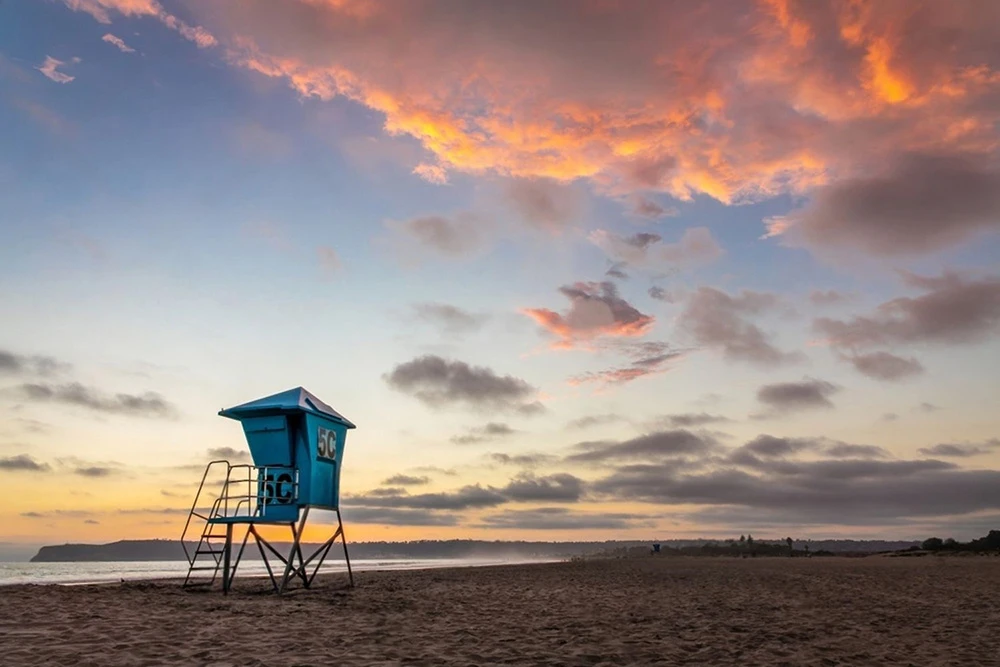
Where summer air tastes like garlicky joy
I swear the air turns savory by July, the heat lifting a soft, roasted perfume that trails you down the street. In Gilroy, people joke there are only two seasons: garlic and waiting for garlic, and honestly it feels true heaven if you love it; pure torture if you don’t. They don’t whisper about it either: the “Garlic Capital of the World,” big letters, bigger pride, and the whole valley hums like a kitchen just before dinner.
Then there’s the garlic ice cream, the dare that turns into a smile. It tastes like cool vanilla with a shy roasted clove tucked inside somehow balanced, like dessert that learned to stand up for itself. What got me most was how unabashed it all is: a place building community from a simple bulb, laughing at the divisiveness of a smell and inviting you in anyway. I remember thinking that sometimes the truest hospitality is unapologetic this is who we are, come as you are, and if you walk away scented for hours, well, that’s just part of the story.

Hippie hues brought the Painted Ladies back to life
It still makes me grin that those prim Victorian “Painted Ladies” wear their joy because of a bunch of dreamers with paint cans. In the 1960s, artists took leftover psychedelic colors sunset sherbet pinks, sea‑foam greens, tangerine trim and treated the old woodwork like a canvas. I remember learning that and suddenly the houses felt less like museum pieces and more like neighbors with a streak of mischief.
Before that, after the war, they were painted a uniform gray, as if trying to behave, blending into the fog and the habit of getting on with things in San Francisco. Then came the revival, and someone many someones chose color on purpose, like switching on the lights after a long winter. The trim popped, the cornices sang, and the porches seemed to breathe again.
I love that the city’s gentlest rebellion wasn’t a wrecking ball, but a brushstroke. It says something about this place: that history doesn’t have to be scrubbed clean to feel new, it can be honored in mint and buttercream and all the wild shades in between. Color as kindness, really an everyday reminder that even the grand and weathered can be coaxed back into delight.
Whispers Beneath the City’s Bright, Glittering Skin
Sometimes I swear the sidewalks hum with old secrets. Beneath them, a honeycomb of tunnels runs from smoky speakeasies to forgotten subway platforms, the air down there cool and a little sweet, like dust mixed with spilled whiskey. People say mobsters once moved crates in the dark, movie stars slipped past the flashbulbs, and even preachers found a quiet way to arrive right on time. If you listen to the echo in your head, you can almost hear scuffed heels and laughter fading around a corner the ground really is alive down there.
What gets me is how it suits Los Angeles: a city that performs in neon and sunshine but keeps a trapdoor just offstage. Those tunnels feel like veins carrying the town’s unsaid stories escape plans, whispered prayers, deals sealed with a nod reminding me that glamour always has a shadow to make it shine. Knowing all that is moving under our feet makes the surface feel kinder, like the city is letting us in on a secret and trusting us to keep it.

A mansion built to outwit ghosts and grief
Some homes feel finished; this one feels restless. At the Winchester Mystery House in San Jose, staircases climb straight into ceilings and doors open into thin air. The air smells of old timber and polish, and afternoon light falls at odd angles across 160 rooms.
I keep thinking about Sarah Winchester, building and building to throw off the spirits people whispered about and maybe to scatter breadcrumbs so her grief would wander somewhere else. I remember the hush in those narrow corridors, not scary so much as tender and careful, like the house knows when to lower its voice.
It isn’t adding new rooms now, but the tales keep growing around it. A place built to mislead ends up pointing you toward empathy, toward the strange, practical ways people try to live with pain. And that, more than the tricks and turns, is what stayed with me.
Eureka, one word for constant discovery in a restless place
Some words feel like sunlight breaking through fog. “Eureka” does that to me – quick, bright, a little mischievous. It’s Greek for “I have found it,” and the old stories say miners hollered it when a glittering vein finally showed after days of aching effort, creek water numbing their wrists and river stones clacking like coins.
Now I hear it in softer ways – over the hiss of an espresso machine when a new roast is just right, or at a kitchen table when a plan finally clicks. In California it’s less a motto than a mood, the everyday permission to delight in finding anything: a shortcut street, a line of code, the first orange poppy on a windy hill.
I love that the promise isn’t about treasure so much as recognition – that sudden yes you feel in your chest. It makes life here feel participatory, like discovery belongs to anyone paying attention. I remember catching a warm bakery smell around a corner and whispering it without thinking, as if one small sweetness could prove the whole, exuberant idea true.

Calls from everywhere to a booth in nowhere
I love that somewhere once, a phone rang into emptiness. Imagine the bell cutting through hot silence, a little metal chime riding the wind while heat shimmered above pale dust. It feels oddly tender, the idea that a ring could wander across a horizon with no one expected to hear it.
Out in the Mojave Desert, miles from the nearest road, that lonely booth became a rumor you could dial. In the ’90s, numbers spun from kitchen tables and dorm rooms and nightshift counters across the world Tokyo, Toledo, who knows just to see if the universe might pick up. And sometimes it did: a static laced hello from a miner, a wanderer, someone stopping long enough to press the receiver to a sun warm cheek.
What gets me is the hope of it all. Calling that booth was like tossing a message in a bottle into a dry ocean, trusting your voice to travel anyway. I remember hearing about it and smiling at the thought that, in a place built on silence, strangers still found each other by chance proof that even in the middle of nowhere, the world can answer back.
The Windows XP hills are real and unedited.
I still remember the first time I learned that the most seen hillscape on earth wasn’t pixels at all, but a real slope in Sonoma County, California. Those impossibly green curves, a sky rinsed in blue, and not a single digital touch just grass after winter rain, breeze combing it until it looked like velvet. The thought made me grin, like a desktop daydream had slipped into real air.
It surprised me in the kindest way, the idea that reality can outdo our screens without even trying. That’s the spirit there: grounded, generous, a little unreal in its own honest way. Between the vines and the rolling fields, there’s a calm that lets you breathe deeper, the faint scent of wet soil and sunshine lingering. Sometimes the world doesn’t need our fixing; it’s already enough and that famous frame simply reminded me to trust my eyes.
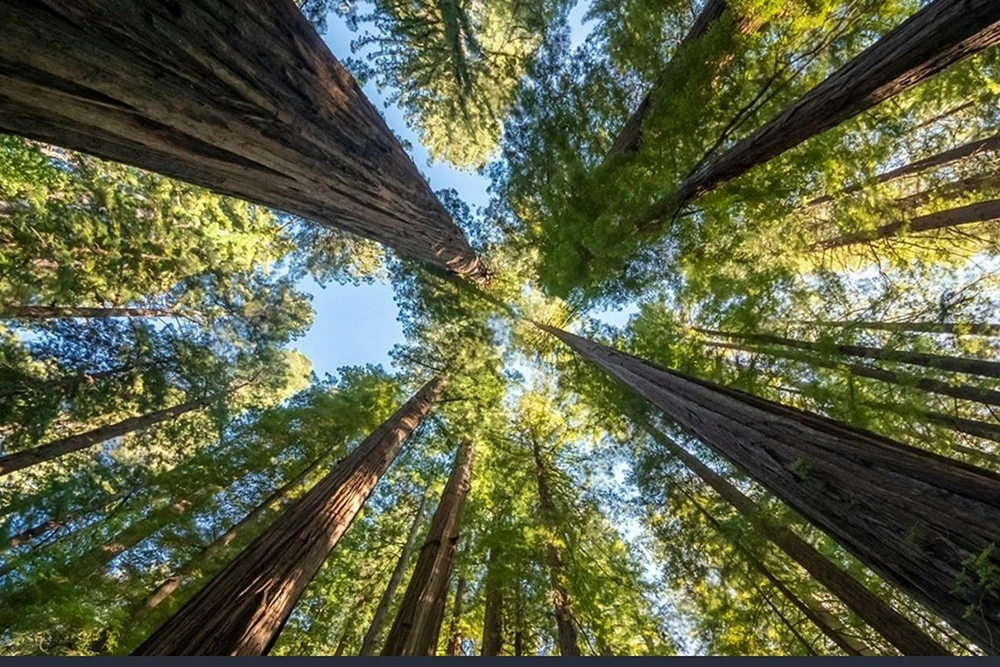
When cold waves sparked surfing’s warmest revolution
Funny how the sexiest fabric began with chattering teeth. I picture that stingy Pacific wind, salt on the lips, and a stubborn surfer named Jack O’Neill stitching warmth into a life that wouldn’t wait for summer. In Santa Cruz, he slipped into neoprene like a second skin, not to look good, just to feel his toes again, and suddenly the ocean felt less like a dare and more like a promise.
And it changed everything. Surfers stayed out past the shivers, dawn sessions stretched into stories, and winter stopped being a locked door. A wetsuit was a campfire you could wear, and who knew the world would eventually call that fabric sexy? I love that California does this takes discomfort and turns it into joy, takes a scrappy fix and lets it rewrite the culture. Every time I catch that faint rubber salt smell, I think of how warmth, not bravado, made the waves feel like home.
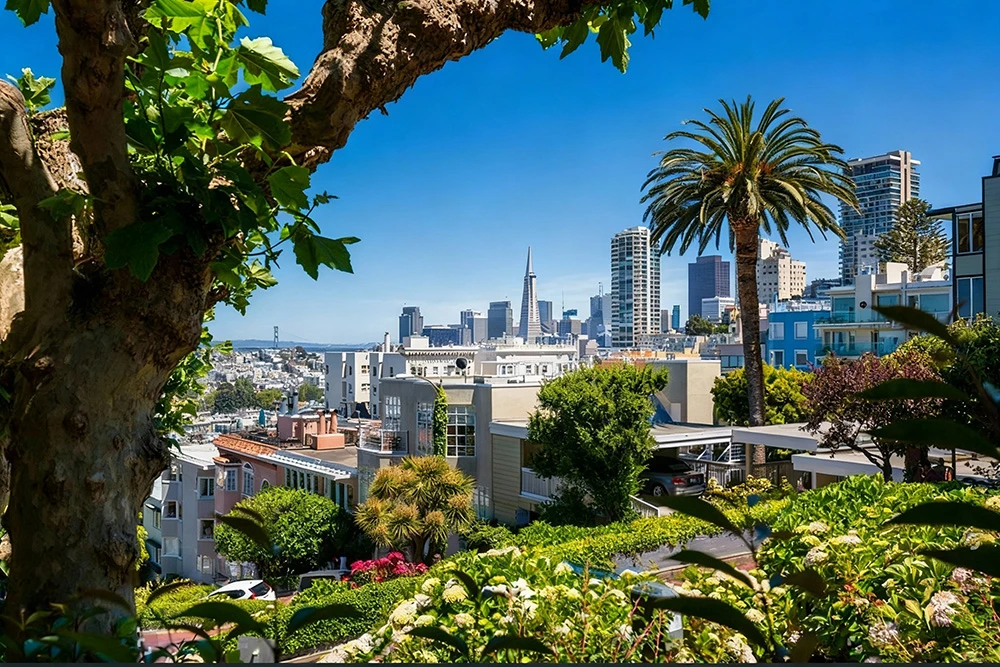
California’s secrets sleep in layers beneath our feet.
It still surprises me how much is down there. Beneath the glittering offices, old ships rest where tides once moved; farther south, the ground is laced with quiet tunnels; and below a beloved theme park, secret lounges and neat, whispering passageways keep their soft hush. Even the air shifts if you pay attention – a ghost of salt, the cool breath of tile, a faint buttered popcorn sweetness that doesn’t seem to know the time of day.
I think that’s why this place feels bigger than its skylines. California builds bravely upward, yet tucks stories away like a matryoshka of wonders, patient and nested. Knowing the ground keeps forgotten decks and dim corridors makes ordinary moments feel quietly enchanted. I remember pausing on a busy corner and sensing a low thrum under my shoes – just enough to remind me there was more here than the sunlight could show.
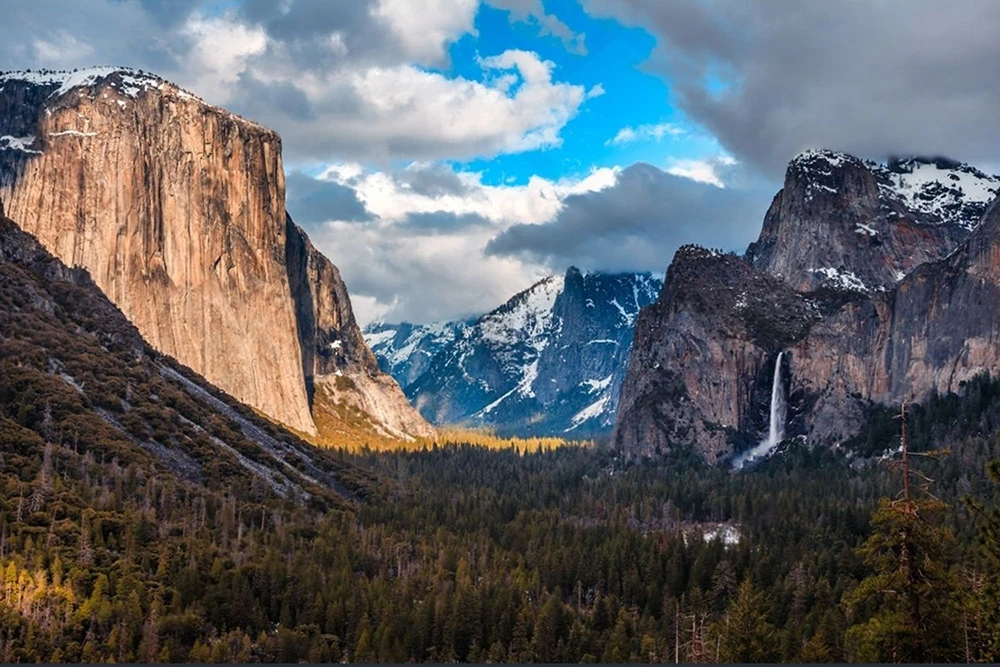
Redwoods That Raise New Trunks From Fallen Ancestors
I remember stepping into a redwood grove and feeling the air shift cool, damp, resin sweet. The bark wears a quiet dusk even at noon, and the ground feels like a well worn quilt underfoot. It’s the kind of silence that makes you breathe slower, as if your heartbeat should match the rhythm of the trees.
In California I learned they can clone themselves, sending up fresh trunks from fallen elders, so a stand can be one long life repeating. It surprised me less than it humbled me: a gentle way of saying nothing really ends, it just continues in a new shape. The same roots have watched empires flare and fade, and now they accept the small electric flicker of our phones; standing there, I felt time loosen just enough to let me belong for a moment.
Where landscapes learn new names on screen
Ever get that strange flutter of déjà vu while cruising a sun glared freeway? I’ll pass a sunburned gas station or a diner with a humming neon sign and swear I’ve met them before, like extras from a life I almost remember. Out here the air smells like hot chaparral by noon and salt by evening; in between, a dry lakebed passes for an alien base, and come night a pine trimmed street is dusted with rented snow and twinkle lights.
That’s the real trick of Hollywood: geography pretending to be anywhere. A canyon passes for snowy mountains, a backlot alley for a winter city, and we nod along because the light makes it feel true. Living here taught me to love reinvention the land is a well worn costume trunk, and that quick déjà vu feels more tender than eerie, a reminder that places can hold more than one name.
The happy accident behind the bridge’s unforgettable glow
I still grin at the thought that the bridge’s red wasn’t planned at all. On foggy mornings when the air tastes like salt and the foghorn hums somewhere out in the gray, that color feels inevitable yet it started as nothing more than a protective coat. The paint’s official name is International Orange, just a primer to shield the steel, until the architects saw how it lit up against the mist, like a streak of sunrise, and decided to keep it.
Maybe that’s what I love most: how accidents become icons here. In San Francisco, the weather is stubborn and the dreams are improvisational, and somehow that shade fits both truths at once. It reminds me that some things we try just to get by end up defining us, and the city too unexpected, warm, a heartbeat through the mist.
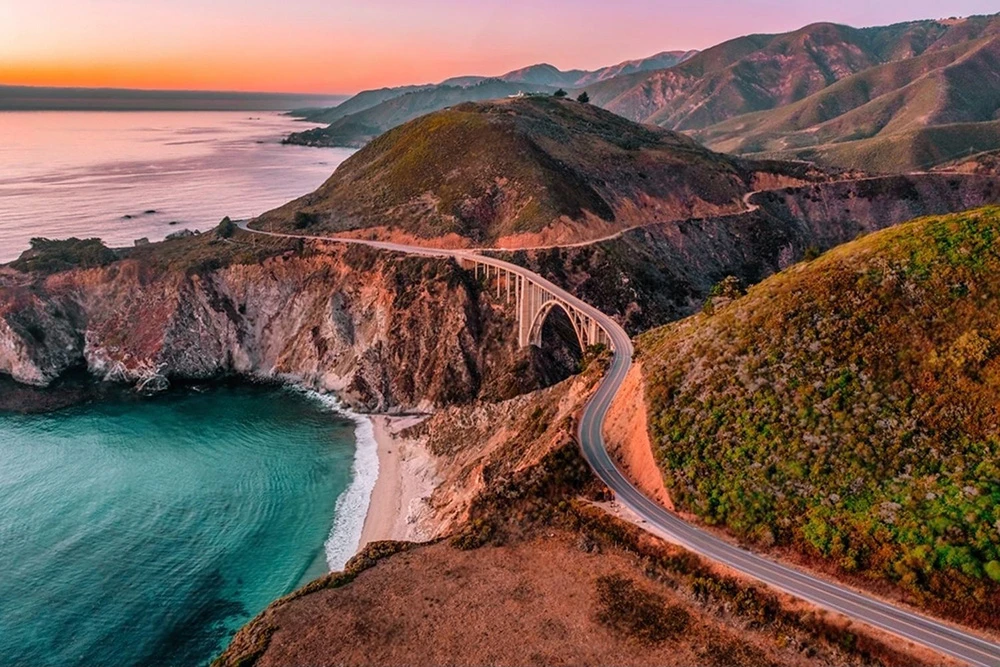
Final thought
Somewhere in the hidden stories, small details, and unguarded human moments, a truer side of California comes into view, less polished and more alive. It feels like a quilt stitched from overlooked threads, warm with the touch of ordinary days. Hold onto these tiny moments, because they prove that wonder often lives off to the side, patient and real. May that gentle reminder send you onward curious, open, and ready to find the next quiet surprise.
